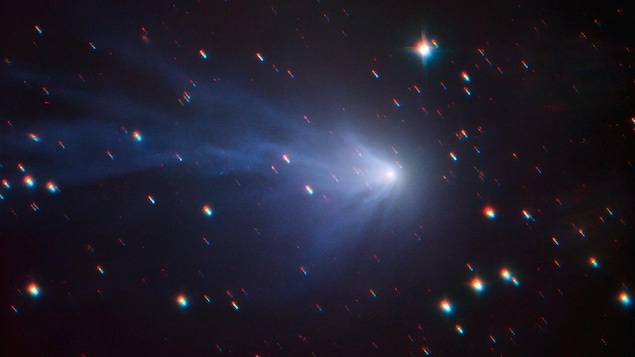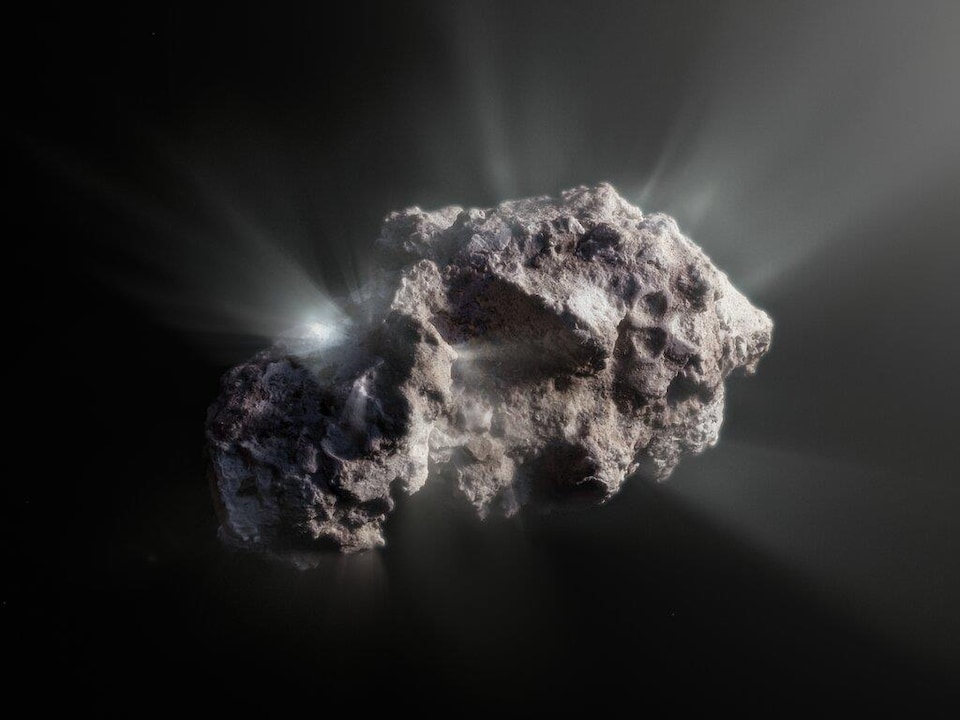This is the first time that such heavy atoms, which are usually seen in hot environments, have been detected in the cold atmosphere of distant comets.
, Explains ESO in a press release.
It was a great surprise that iron and nickel atoms were discovered in the atmosphere of all comets that we have observed during the past two decades, about twenty of them, and even those far from the sun, in the cold. from space
Said Jan Manfred from the University of Liège in Belgium.
Milestones
- A comet is made of rock, dust, and ice.
- Comets formed at the same time as our solar system, 4.6 billion years ago.
- The comet consists of three parts: the core, the hair, and the tail.
- The core and hair make up the head of the comet.
Astronomers have known that heavy metals are found in the dust and rocks of comet nuclei. However, they did not expect to find it in their atmosphere when they were further from the sun, as there are no minerals in solid form. Sublime
In general it is not at low temperature (sublimation is the transition from a solid state to a gas state).
Nickel and iron fumes have been detected in comets that were observed more than 480 million kilometers from the sun, more than three times the distance between Earth and the sun.
The statement continued.
Scientists have found that iron and nickel are present in roughly equal quantities in the atmosphere of all the observed comets. However, in the matter of the solar system, for example in the sun and meteors, one generally finds about ten times more iron than nickel.
So this new data will have ramifications On how astronomers understand the formation of comets and the solar system
.
Comets […] They are like fossils for astronomers
Emmanuel Gehen, study co-author and researcher at the University of Liège, explains.
The optical spectra of comets have been studied for decades, but no one has discovered the presence of nickel and iron in their atmosphere.
This discovery remained under the radar for many years.
To achieve this, the researchers used data from the ESO’s Visible and Ultraviolet Spectrophotometer, which analyzes the atmospheres of comets at various distances from the sun.
This technology allows astronomers to reveal the formation of stars: each chemical element, atom or molecule, leaves a unique imprint – a set of lines – in the light spectrum of observed objects.
, Explains ESO.
Scientists have detected faint, unknown lines in the spectrums of the spectrophotometer data. On closer inspection, they noticed thisThey indicated the existence of neutral atoms of iron and nickel
.
Researchers estimate that for every 100 kilograms of water in comets’ atmosphere there is only 1 gram of iron and roughly the same amount of nickel.
Iron is usually ten times more abundant than nickel, and in the atmospheres of these comets we found roughly the same amount for both elements.
Belgian authors explain this work, published in the journal nature (A new window) (In English).
We came to the conclusion that it could come from a certain type of material on the surface of the comet nucleus, sublimate at a fairly low temperature and release iron and nickel in almost identical proportions.
Damien Hatsemikers, who is also a member of the Liege University team, explains.
Mysterious nature
Currently, scientists do not yet know the exact nature of this substance, however Developments in Astronomy Instruments […] Researchers should be allowed to confirm (in the coming years) the source of the iron and nickel atoms in comets’ atmospheres
.
Now others will look for these lines and those of other minerals in the data from many telescopes.
Emmanuel Gehen explains.
We think this will lead to more work on this as well.
Interstellar heavy metals
A Polish team showed that heavy metals are also present in the atmosphere of interstellar comet 2I / Borisov, the first of its kind to visit our solar system.
These minerals were observed with a VLT X-shooter ESO spectrometer during the passage of the comet’s perihelion about a year and a half ago, when it was about 300 million kilometers from the sun, or about twice the distance between the Earth and the sun. They discovered that 2I / Borisov atmosphere also contains gaseous nickel.
At first, we found it difficult to believe that atomic nickel could actually be present in the 2I / Borisov atmosphere far from the sun. It took a lot of testing and verification before we could convince ourselves
Jagiellonian University, Piotr Guzik, explains.
This result is surprising, because before the two studies published today, Gases containing heavy metal atoms are only observed in hot environments, for example, in the atmospheres of extremely hot exoplanets or vaporizing comets that have passed near the sun
.
And we suddenly understood that nickel is present in comet atmospheres in other corners of the galaxy.
Co-author Micha Drahus, who is also from Jagiellonian University, says.
Details of this second study are also published in the journal nature (A new window) (In English)
Polish and Belgian work show that comets of the Solar System 2I / Borisov have more in common than previously thought. Now imagine comets in our solar system have true analogues in other planetary systems: that’s really cool
Mikai Drahos concludes.

“Hardcore beer fanatic. Falls down a lot. Professional coffee fan. Music ninja.”








More Stories
SALES / PHOTO SALES – Nikon D850 “5 Star” Bare Body Photo Body at €2,539.00
Discovering a new turning point under the Antarctic ice sheet! What are the consequences?
Record number for an insect!